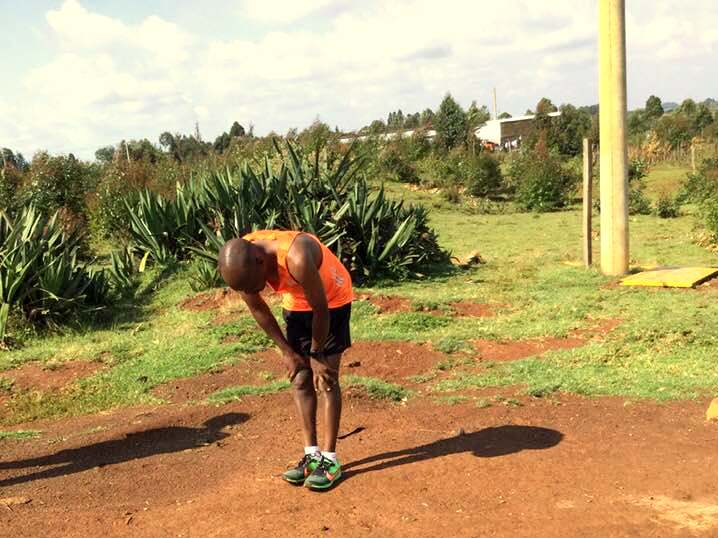
A Runner after a marathon training run.
Written or unwritten, every organized activity in this world has got its own defined rules and regulations.
From the fifteen years of experience I have had in professional athletic camps in Kenya, below are the unwritten rules that I have been observing.
Here are the marathon training rules
- Always start your runs a little slower than you will finish
If there is one virtue that should be cultivated often in long distance running, it should be patience. Most of the runs, including long runs, should start slower and the pace should build up gradually as the body continues to warm up.
A great long, or Tempo Run is one in which a runner feels they have some energy left in them towards the end of the workout, rather than one in which they struggle to finish.
- Invest more in your shoes for marathon training.
There are many financial and commitment sacrifices that go into making one a successful runner. But, a long distance runner ought to give priority to the shoes they train in. Quality shoes help in preventing injuries and make running more enjoyable.
The highest percentage of injuries in running is caused by wearing the wrong shoes.
Runners should have at least three quality pairs of shoes to be able to rotate them in a week of training. They could choose which ones work best for their Tempo Runs, which works for longer runs and which ones work best for the easy runs.
- Know when to run with, or against the traffic
From a personal experience, I once got hit by a sheep and once by a motorbike on the road. I have also seen a number of runners get hit by motorcycles here, and heard about others.
Safety is important while running beside busy roads. The side of the road you use depends on many factors. Runners in a large group, or those being followed closely by a car can run on the same side with the traffic since they are more visible and the car provides some protection.
On the other hand, individual runners are better off running against the traffic so that they can see the cars approaching and move further away from the road if needed.
- Use indicators when running

After being in the big training camps in Kenya, I can easily tell a runner who has been in such camps whenever I watch big marathons. There are some reflex actions that seem to come naturally from them. For example, when they see a pothole in front of them, their arms quickly come down and their palms face the back to warn others to be careful.
They also indicate when they are about to branch out of the road to avoid collisions.
- Alternate hard with easy days
Patience comes in again in realizing that one cannot fit all the hard workouts in a week. The body needs to recover and repair muscles after hard workouts. For training to be effective, the body has to take time to rebuild and replenish itself before the next hard workout, otherwise, a runner will reach stagnation, or a state often referred to as “a plateau” in their training.
- Jog on soft ground when feeling discomfort in your legs
The best way to come back from recovery from an injury as a runner is to start jogging again on soft ground as the injury heals. It is the same case when one has been out of training for a while and is getting back into running.
The soft ground will have less impact on the joints and muscles as the body begins to adapt again to running. With time, the body gets lighter and strong enough to tackle harder workouts on the track and on the tarmac roads.
- Warm up before intensive workouts
Before any intensive workouts like track intervals, Tempo Runs, hill repeats, Fartlek Runs, among others, it is very important for runners to warm up by jogging slowly for about 15 minutes before doing the workouts.
Warming up helps the body to do the workouts more efficiently and more effectively. Blood vessels, including tiny capillaries, open up, increasing the oxygen supply to the muscles. The muscles contract more easily, and joints loosen up as they warm.
Here is a link to my online coaching programs

